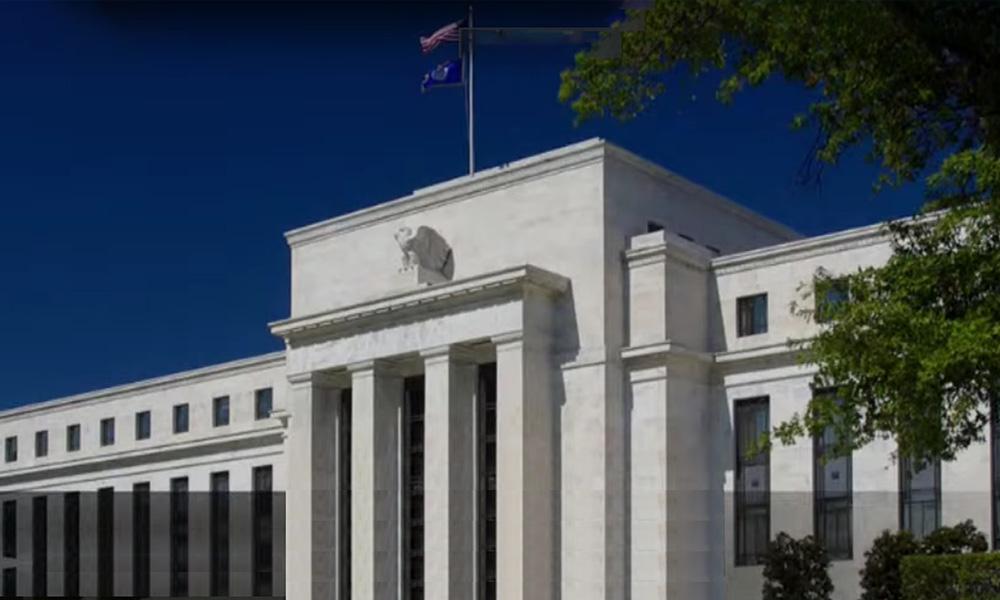The Fed remains on hold, and expectations for rate cuts slow down! Tariff inflation is coming, Powell: Flexibly respond, data is king!
2025-06-19 06:30:43

1. Fed policy: Seeking change while maintaining stability, slowing down the pace of interest rate cuts
1. Interest rates remain unchanged, and the economic outlook is cautiously optimistic
The Fed decided at its meeting on June 18 to keep the target range of the federal funds rate at 4.25%-4.50%, which was in line with market expectations. The policy statement pointed out that although economic uncertainty has decreased, it is still high, reflecting the Fed's cautious attitude towards future economic trends. Powell said at the press conference that the current monetary policy is in a "mildly restrictive" state, and the economic performance has not shown obvious pressure from the "highly restrictive" policy. This position shows that the Fed believes that the current interest rate level is sufficient to cope with current economic challenges, while leaving room for future policy adjustments.
2. Expectations for rate cuts: two this year, slower in the future <br/>Fed policymakers predict that there will still be two rate cuts in 2025, each by 25 basis points, for a total of 50 basis points, which is consistent with the forecasts in March and December. However, their outlook on the pace of rate cuts has changed, with only one rate cut each in 2026 and 2027, a significantly slower pace. The main reason for this adjustment is that the process of inflation returning to the 2% target may be prolonged due to external factors (such as tariff policies). Powell emphasized that the path of rate cuts is not set in stone and will be highly dependent on future economic data performance, especially changes in inflation data.
3. Powell's attitude: flexible response, data is king
Powell said after the meeting that the Fed is currently in a favorable position and can patiently wait for more economic data before deciding whether to adjust its policy. He admitted that no one has "full confidence" in interest rate forecasts and all decisions will be based on data. He also mentioned that the Fed is ready to flexibly adjust its policies based on new information to respond to possible economic risks. This flexibility has injected some confidence into the market. After the policy statement was released, the US stock market rose slightly and the 10-year Treasury yield fell slightly.
2. Economic Forecast: The shadow of stagflation emerges, and inflation expectations are raised
1. Growth slows, unemployment rises
In its latest economic forecast, the Federal Reserve lowered its forecast for economic growth in 2025 from 1.7% in March to 1.4%, indicating a weakening of economic growth momentum. At the same time, the unemployment rate is expected to rise to 4.5% by the end of the year, slightly higher than the 4.4% forecast in March, reflecting potential pressure in the labor market. It is worth noting that the U.S. unemployment rate was 4.2% in May, still at a historical low. The Federal Reserve believes that the labor market is still strong and has not become the main driver of inflation.
2. Inflation expectations have significantly increased
Inflation forecasts are another highlight of the Fed's meeting. Policymakers raised their inflation forecasts to 3% by the end of 2025, much higher than the current level, and expected inflation to remain high at 2.4% in 2026 before gradually falling to 2.1% in 2027. This adjustment reflects the expected impact of the Trump administration's tariff policy on prices. Powell made it clear that tariffs will be the main driver of rising inflation this summer, and rising commodity prices will inevitably be transmitted to consumers.
3. The picture of mild stagflation
Overall, the Fed painted a picture of a "mild stagflation" economy: slowing economic growth, rising unemployment, and inflation above target. This situation is similar to the typical "stagflation" characteristics, but to a lesser extent, reflecting the complex challenges facing the US economy amid global trade tensions and geopolitical uncertainties. The Fed's forecast also shows that policymakers have conducted in-depth analysis of the potential impact of Trump's economic policies, trying to provide clearer guidance for future policy making.
3. Tariff shock: A new threat of inflation, with consumers bearing the brunt
1. Tariffs push up prices, increasing costs for consumers
Powell warned at a press conference that the high tariff policy implemented by the Trump administration will lead to a significant increase in commodity prices in the summer of 2025, and consumers will bear part of the tariff costs. He explained that the impact of tariffs needs to be gradually transmitted through the supply chain. Many of the goods currently sold by retailers are still inventory before the tariff increase, but as a new batch of high-tariff goods enter the market, price increases will gradually become apparent. For example, the prices of categories such as personal computers and audio-visual equipment have shown an upward trend.
2. Tariffs surge, fiscal revenue hits record high
Data shows that in May 2025, the U.S. Treasury's customs revenue reached $23 billion, almost four times that of the same period in 2024, highlighting the strength of Trump's tariff policy. The Trump administration imposed a 25% tariff on imported steel and aluminum, and a high tariff of more than 50% on some Chinese goods. Although some companies choose to bear the costs in the short term, Powell believes that in the long run, it will be difficult for consumers to completely avoid price increases.
3. Business and market reactions <br/>Trump administration officials, such as Treasury Secretary Benson, insisted that high tariffs would not be passed directly to consumers and that some foreign producers would absorb the costs. However, Powell refuted this by citing business and historical data, pointing out that many companies have made it clear that the costs of tariffs will be passed on to consumers in part or in full. In addition, Powell also mentioned that some of the high tariff plans announced in April (such as the 145% tariff on Chinese goods) have been suspended, reducing uncertainty in the short term, but the overall tariff level is still high, which puts pressure on economic activity.
4. Geopolitics and external risks: Oil prices and trade uncertainties coexist
1. The Israel-Iran conflict is not mentioned
The Fed's policy statement did not mention the recent outbreak of hostilities between Israel and Iran and their potential threat to global energy markets. In response to relevant questions, Powell said that the Fed is paying attention to this situation. Geopolitics may push up energy prices, but it usually does not have a lasting impact on inflation. This statement shows that the Fed regards geopolitical risks as short-term disturbances rather than the main driver of long-term inflation.
2. Trade policy uncertainty has eased
Powell pointed out that trade policy uncertainty has declined after reaching a peak in April, thanks in part to the Trump administration's suspension of some high tariffs. However, he stressed that changes in trade, immigration and geopolitics are still ongoing, and the Fed will continue to pay close attention to the impact of these factors on the economy and ensure that monetary policy formulation remains prudent.
5. Market and policy outlook: Can an interest rate cut be expected in September?
1. The Fed’s signals are converging with market expectations
The Fed's forecast for a rate cut in 2025 is basically consistent with market expectations. The market generally expects the Fed to cut interest rates by 25 basis points as early as the meeting on September 16-17. The policy statement and Powell's speech did not significantly change the market's expectations for the timing of the rate cut. The US stock index maintained a slight increase after the statement was released, and the 10-year Treasury yield fell slightly, indicating that the market's digestion of the Fed's policy is relatively stable.
2. Trump’s pressure and the independence of the Federal Reserve
Trump publicly criticized Powell before the meeting, calling him "stupid" and demanding an immediate and substantial rate cut, even joking that he might become the Fed chairman. Powell did not respond, and the Fed continued to advance its policies along the established path, demonstrating its independence. Powell stressed that the Fed's responsibility is to prevent one-time price increases from turning into sustained inflation and to ensure long-term economic stability.
3. Future policy adjustment direction
Powell revealed that the Fed will complete the framework review in late summer, and may adjust the communication method at that time to convey policy intentions more clearly. He also said that the Fed will pay close attention to the actual impact of tariffs on inflation in the coming months to determine the timing and magnitude of interest rate cuts. This "wait and see" strategy reflects the Fed's cautious attitude in an environment of high uncertainty.
- Risk Warning and Disclaimer
- The market involves risk, and trading may not be suitable for all investors. This article is for reference only and does not constitute personal investment advice, nor does it take into account certain users’ specific investment objectives, financial situation, or other needs. Any investment decisions made based on this information are at your own risk.










